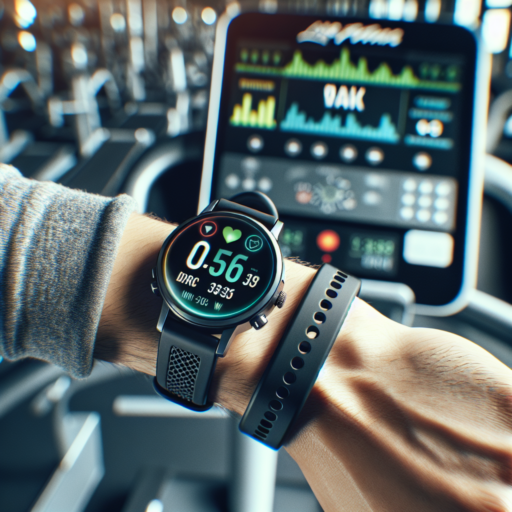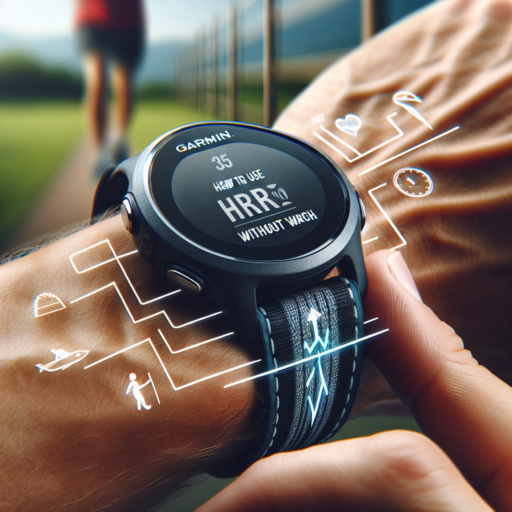Introduction to Tracking Treadmill Walks on Apple Watch
The Apple Watch has revolutionized how we track our fitness activities, offering a seamless and integrated approach to monitor our health goals. Among its many features, tracking treadmill walks stands out as a significant functionality for fitness enthusiasts who prefer indoor workouts. This brief introduction focuses on the essentials of leveraging your Apple Watch to keep a record of your treadmill sessions, ensuring you get the most out of your indoor walking exercises.
Starting with the basics, your Apple Watch comes equipped with a variety of sensors and the Workout app, designed to comprehensively track your indoor fitness activities. When embarking on a treadmill walk, it’s crucial to choose the «Indoor Walk» option in your Workout app. This selection allows the watch to accurately measure your pace and distance by calibrating to the specific movement and stride length associated with indoor walking. It’s a simple yet effective way to ensure that every step you take on the treadmill is counted towards your daily goals.
In addition to selecting the right workout option, understanding the data your Apple Watch collects during a treadmill walk is vital for maximizing your workout efficiency. The smart device meticulously records your heart rate, calories burned, steps taken, and distance covered. By tapping into this wealth of information, you can monitor your progress over time, adjust your walking pace, and set more precise fitness goals. It’s the interplay of accurate data tracking and personalized goal setting that makes the Apple Watch a powerful tool for enhancing your treadmill workout experience.
Step-by-Step Guide: Setting Up Your Apple Watch for Treadmill Tracking
Setting up your Apple Watch for treadmill tracking is an excellent way to enhance your indoor workout sessions. This step-by-step guide will walk you through the essential stages to ensure your device is perfectly calibrated to monitor your progress on the treadmill. From ensuring accurate distance measurements to calorie tracking, following these instructions will help you make the most out of your workout routine.
Initial Setup and Calibration
Before diving into the treadmill tracking features, it’s crucial to properly calibrate your Apple Watch. Start by wearing your Apple Watch snugly on your wrist and carry your iPhone with you during the calibration process. Find an open, flat area that allows you to walk or run at your natural pace. Open the Workout app on your Apple Watch and select the Outdoor Walk or Outdoor Run option. Spend at least 20 minutes on this activity to provide ample data for accurate calibration. Remember that the more you calibrate, the more precise your Apple Watch will be in tracking indoor treadmill workouts.
Choose the Correct Workout Type
After ensuring your Apple Watch is calibrated, selecting the correct workout type on your device is vital for treadmill tracking. Open the Workout app on your Apple Watch and scroll to find the ‘Indoor Run’ option for treadmill exercises. This setting is specifically designed to track your movements and pace while running or walking on a treadmill, making it ideal for indoor workouts. By selecting ‘Indoor Run,’ your Apple Watch utilizes motion sensors and heart rate data to estimate your distance and calorie burn, ensuring that your indoor exercises are efficiently tracked.
Optimizing Accuracy: Tips for Tracking Treadmill Activities on Your Apple Watch
Keeping track of your treadmill activities with your Apple Watch can significantly enhance your fitness journey, ensuring you get the most precise data for your workout sessions. Let’s dive into some essential tips to optimize the accuracy of your treadmill exercises when synced with your beloved gadget.
Ensure Your Personal Information is Up-to-Date
First and foremost, accurate input equals accurate output. Verify that your personal information on the Health app is current, especially your height and weight. This information directly influences the calculations for calories burned and steps taken, offering a tailored fitness tracking experience.
Calibrating Your Apple Watch
Calibration is key to enhancing your Apple Watch’s understanding of your unique walking and running strides. By performing outdoor walks or runs while wearing your watch, you train it to gauge your pace more accurately when you’re on the treadmill. Remember, the goal is to provide it with as much data as possible for better personalized activity tracking.
Creating a habit of regularly updating and maintaining the data accuracy on your Apple Watch ensures that every sweat session on the treadmill is accounted for with precision. Embrace these tips, and watch as your fitness assessments soar to new heights of accuracy, making every step count towards your health goals.
Understanding the Workout App: How to Use it for Treadmill Walks
Exploring the functionalities of a workout app for treadmill walks can significantly enhance your exercise routine. With a focus on the treadmill activity, these apps are designed to track your progress, adjust to your fitness level, and even entertain you while you walk. Getting to grips with how to effectively use these features is key to maximizing their benefits.
Firstly, many workout apps offer customizable workout plans that can be tailored specifically to your treadmill sessions. By inputting your goals, whether they be weight loss, endurance training, or simply staying active, the app can suggest a series of walks that vary in intensity and duration. This personalized approach ensures that your treadmill walks are always aligned with your fitness objectives, making every step count.
Another significant feature to look into is the tracking capabilities of workout apps. During your treadmill walks, these apps meticulously record data such as distance covered, calories burned, and even your heart rate if synced with a compatible device. This data not only allows you to monitor your progress over time but also helps the app adjust future workouts to better suit your improving fitness level.
Moreover, to keep your treadmill walks interesting, many workout apps integrate entertainment features or motivational tools. Some of these may include streaming your favorite music or podcasts directly through the app, or providing virtual scenery to simulate outdoor walking paths. This blend of functionality and entertainment ensures your treadmill workouts remain engaging and motivates you to stay consistent with your exercise regimen.
Calibration: Enhancing the Precision of Your Treadmill Workouts on Apple Watch
The precision of your treadmill workout sessions can greatly improve by correctly calibrating your Apple Watch. This process ensures that the data you see on your wrist accurately reflects your physical efforts and provides more tailored health insights. Calibration enhances the Apple Watch’s sensors and algorithms, making every step count towards your fitness goals with remarkable accuracy.
Calibration involves a series of steps that allow your Apple Watch to learn your stride length under different conditions. This practice is especially beneficial for those who rely on indoor exercises or have to deal with adverse weather conditions, making outdoor workouts less appealing. By calibrating your device, you’re not just improving the measurements of distance and pace, but also the calorie count estimates, which are crucial for those tracking their weight management or fitness routines closely.
To start calibrating your Apple Watch, ensure you’re in an open area with good GPS reception if you’re doing an outdoor walk or run for the calibration process. This will help your Apple Watch to more accurately compare its data with that of a standard GPS measurement, enhancing the precision of future treadmill workouts. Remember to perform the calibration process periodically to account for any changes in your fitness level, gait, or running technique. This ensures that your Apple Watch continues to provide you with the most accurate data over time, making your treadmill workouts as effective as possible.
Viewing Your Treadmill Workout Data: A Comprehensive Guide
Accessing your treadmill workout data is essential for those looking to optimize their fitness routine. The metrics provided by your treadmill, such as distance, pace, calories burned, and heart rate, can be invaluable in assessing your performance and setting realistic goals. Understanding these figures is the first step towards making informed decisions about your exercise regimen.
Treadmills with built-in displays often make it easy to view your workout data in real-time. These intuitive screens can show a wide range of information, from your current speed to the incline level, allowing for adjustments on the fly to maximize your workout efficiency. However, the depth of data available can vary significantly between models, making it important to familiarize yourself with your specific treadmill’s capabilities.
Syncing Your Data with Fitness Apps
For those looking to dive deeper into their performance analytics, syncing your treadmill workout data with fitness apps can be a game-changer. Many modern treadmills offer connectivity options like Bluetooth or Wi-Fi, enabling you to upload your workout details to various apps. This not only helps in keeping a more comprehensive log of your activities but also allows for detailed analysis and personalized fitness advice, based on your workout history.
Maximizing Your Fitness Goals: Using Your Apple Watch to Improve Treadmill Workouts
Exploring innovative ways to enhance your treadmill routine can significantly impact your exercise efficiency and enjoyment. The Apple Watch emerges as a powerful ally in this pursuit, offering a range of features designed to elevate your workout experiences. By harnessing the capabilities of your Apple Watch, you can unlock the potential to reach your fitness goals with greater precision and motivation.
Tracking Your Exercise Metrics Precisely
One of the most valuable benefits of integrating your Apple Watch into treadmill workouts is the ability to monitor real-time exercise metrics. The Apple Watch adeptly measures crucial data such as heart rate, calories burned, distance covered, and pace. This immediate feedback is not only motivating but also allows for adjustments in your workout intensity on the fly, ensuring you’re always training at your optimal level for maximum effect.
Personalizing Your Workout Sessions
Customization is key in making any fitness routine enjoyable and sustainable. Your Apple Watch offers customization options that tailor your treadmill workouts to your personal fitness aspirations. Whether you’re aiming to improve endurance, speed, or weight loss, you can set specific goals on your watch. Additionally, the watch can suggest varied workout plans based on your performance history, keeping your routine fresh and challenging.
- Set workouts based on desired calorie burn, distance, or time targets.
- Receive automatic suggestions for workout intensity based on daily activity and workout history.
- Use the Breathe app to focus on recovery and mindfulness during cooldown periods.
As you continue to utilize these features, you’ll likely notice a marked improvement in your treadmill workouts’ effectiveness and enjoyment. By doing so, the Apple Watch proves itself as an invaluable partner in your journey towards achieving and even surpassing your fitness goals.
No se han encontrado productos.
Troubleshooting Common Issues When Tracking Treadmill Walks on Apple Watch
When attempting to accurately track treadmill walks using an Apple Watch, users often encounter a range of common issues that can impact the precision and enjoyment of their workout reports. Understanding these glitches and learning how to effectively troubleshoot them can significantly enhance your fitness tracking experience. From calibration problems to discrepancies in distance and pace data, let’s explore some of the most frequent challenges and their solutions.
Calibration for Improved Accuracy
Calibrating your Apple Watch is a fundamental step to ensure the accuracy of the workout data it collects, particularly when tracking treadmill walks. Calibration helps your device learn your stride length and other personal metrics, enhancing its precision. To troubleshoot issues related to inaccurate distance or pace readings, try recalibrating your watch by going to an open area with GPS coverage and walking at a consistent pace for at least 20 minutes. This process fine-tunes the device’s sensors, leading to improved reliability in indoor workout sessions.
Ensuring Consistent Contact and Movement
A common issue that can lead to tracking discrepancies involves how the Apple Watch is worn during treadmill walks. For optimal tracking, the watch should maintain consistent contact with your skin. A band that’s too loose may cause the sensors to record inaccurate data. Additionally, your movement pattern can affect tracking accuracy. For instance, holding onto the treadmill’s handrails can prevent your arm from moving naturally, which in turn can cause the Apple Watch to underreport the distance covered. To mitigate this, focus on maintaining a natural arm swing, similar to outdoor walking or running.
While troubleshooting common tracking issues with your Apple Watch during treadmill walks, remember that software updates can also play a vital role in enhancing accuracy and performance. Apple frequently releases updates that address known bugs and improve the overall functionality of their devices. Therefore, ensuring your Apple Watch is running the latest software version is a crucial step in maintaining its tracking accuracy. By addressing calibration, wear, movement, and software considerations, you can significantly improve the quality of your workout data and enjoy a more satisfactory fitness tracking experience.
Comparing Indoor and Outdoor Walk Tracking on Apple Watch: What You Need to Know
When it comes to tracking your walks, the Apple Watch offers robust features, but there are distinct differences between tracking indoor and outdoor activities. Understanding these differences can help Apple Watch users get the most out of their device, ensuring accurate health metrics and exercise tracking. Here, we delve into the specifics of how the Apple Watch distinguishes between these two types of environments and what this means for users.
Accuracy of GPS and Sensor Data
For outdoor walks, the Apple Watch utilizes GPS along with its accelerometer and gyroscope to accurately track your distance, pace, and route. This precise location tracking ensures outdoor exercise metrics reflect your actual performance. On the contrary, when walking indoors, the GPS signal is unavailable or unreliable, prompting the Apple Watch to rely mainly on motion sensors. As a result, the device may require additional calibration through the iPhone to increase its accuracy for indoor walks.
Impact on Exercise Metrics
The environment where you walk affects the data captured by your Apple Watch. Outdoor walking data tends to be more comprehensive, offering insights into your elevation changes and exact route taken, which can be beneficial for those looking to analyze their performance over varying terrains. Conversely, indoor walks are tracked based on the number of steps taken and estimated distance, which might not capture the complete picture of your workout. Users should keep this in mind, especially if they rely on their Apple Watch for detailed exercise analytics.
Conclusion: Harnessing the Full Potential of Your Apple Watch for Treadmill Walking
In conclusion, leveraging the full capabilities of your Apple Watch can significantly enhance your treadmill walking experience. This smart device isn’t just about tracking steps or heart rate; it’s a comprehensive fitness partner that offers detailed insights and personal coaching right on your wrist. By customizing workout views, setting realistic goals, and utilizing the watch’s feedback system, users can achieve a more focused and effective workout.
Incorporating the Apple Watch into your treadmill routine allows for an intersection of technology and personal health like never before. The device’s ability to track your progress in real-time and over periods gives you concrete data to analyze and build upon. This, coupled with the motivational factors the Watch provides, such as awards and sharing capabilities, can drastically improve your walking regimen’s consistency and enjoyment.
To truly harness the full potential of your Apple Watch for treadmill walking, it’s crucial to explore beyond the basics. Delve into the various health and activity applications compatible with your device, and don’t hesitate to customize notifications to suit your treadmill walking needs. Engaging with other Apple Watch users can also offer a wealth of tips and tricks tailored to refine your walking routine. Remember, the goal is to make each step on the treadmill as efficient and effective as possible, with your Apple Watch serving as a vital tool in that journey.




